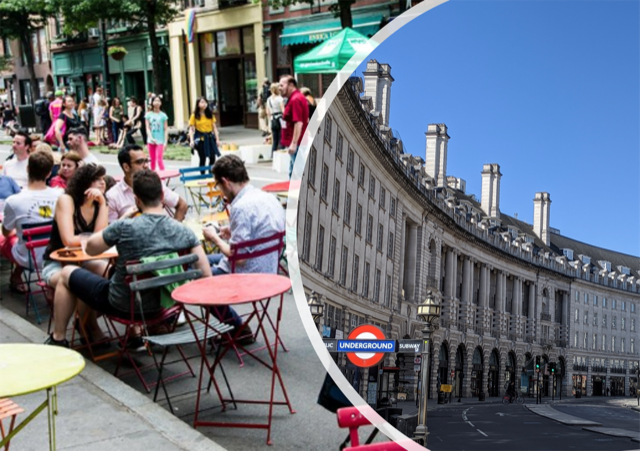Post
NOW ONLINE | Local Heroes
28 Sep 2020
By Diane Cunningham
We know that the lockdown has affected current patterns of working, shopping and eating out. Local high streets are reporting some recovery, but central areas are still seeing footfall that is a fraction of pre-pandemic levels.
Centre for London has been tracking the impact of COVID in their monthly London Intelligence Economic Tracker. During our panel discussion, Erica Belcher, Senior Researcher at Centre for London brought us up to date on how high streets in central London are faring when compared to those in the suburbs including East Ham, Bromley and Southall and the rest of the UK.
We heard that London is performing the weakest out of all UK regions with high numbers of people furloughed and new job posting below levels seen a year ago. There are two key aspects in terms of jobs:
- It’s estimated that a high percentage of jobs in the financial services sector are continuing from home so there is little furlough in place but office districts have extremely low footfall
- A large proportion of London’s jobs are in the retail, hospitality and creative sector, which have been hit hard by the pandemic.
Londoner’s are continuing to avoid public transport and workplaces with tube stations such as Oxford Circus has seen a 66% reduction on usual passenger numbers. With the latest advice reverting to working from home, this may decline further. Yet, with so many people working from home, the index shows that consumer spending in smaller town centres is increasing, unsurprisingly on grocery shopping but also when it comes to clothing and eating out, however, the data does not yet reflect the Eat out to Help Out scheme. You can download The London Intelligence on The Centre for London website.
We also heard from Nicola Grant, Executive Director of Positvely Putney BID, who provided an update on what was happening in one of these small-town centres, in Putney in southwest London.
The BID had started implementing changes to an established, riverside, residential area, to improve the high street, pre-lockdown when work included widening pavements and ordering parklets which gave them a head start on the changes which were to come. They’ve built on this by painting the windows of empty units with images celebrating the river and implemented a range of safety measures to ensure visitors feel confident in visiting the high street. A big change has been seeing businesses working more closely together to encourage local spend, recommending each other to customers. The BID also signed up with ShopAppy at the start of lockdown to help get traders online and all of the activity uses the hashtag #shareourputney on social media, to pull together all efforts.
The final panel member was Paul O’Grady, Director from Grosvenor who discussed Eccleston Yards, a mostly independent retail and dining hub created in what was derelict space near Victoria station, in Belgravia. It’s a mixed, centrally located area that as well as being residential would normally also be busy with office workers and tourists.
Grosvenor has funded pavement terraces and planting (which was mobile for flexible space) to create outdoor dining that creates an atmosphere that encourages dwell time whilst building consumer confidence. We heard that many restaurants had traded well throughout this period with Grosvenor funding an extension of the Eat Out to Help Out scheme into September which has seen an increase of 5% above average footfall in September compared to the West End. A Sunday market has been introduced bringing arts and culture together. They have also encouraged those traders who are more financially robust to pay their rent as due in Q3 to enable support to go to those across the wider estate who may be struggling.
There was also a marketing campaign with a door drop to 65,000 households to introduce to them to the local amenities focusing on the shops and services operating and events taking place. This was replicated online using the hashtag #FindYourBelgravia. With two-thirds of retailers in Belgravia being independent and many missing from the larger online platforms, Grosvenor partnered with Near St to ensure local products appear in Google searches.
What’s worked so far across different neighbourhoods
- Engaging the community via marketing campaigns, especially social media and use of bespoke hashtags
- Encouraging businesses to work together
- Getting businesses online for marketing and sales
- Dressing empty units and connecting them with the place
- Supporting those who need it most by reallocating existing resources
With questions from the audience, the event ended on a positive note with all panel members saying that they were optimistic about the position that their local and central neighbourhoods would be in 12 months times whilst acknowledging that not every business or place may survive.
Members of the London Society can access the recording of the full discussion via our Online Archive page. Non-members will need to have a 12 month online access pass, which can be obtained here.
